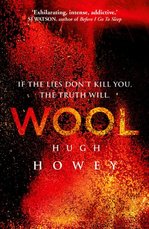The 30 Best Dystopian Novels of All Time
Header image designed by Josh D. Jackson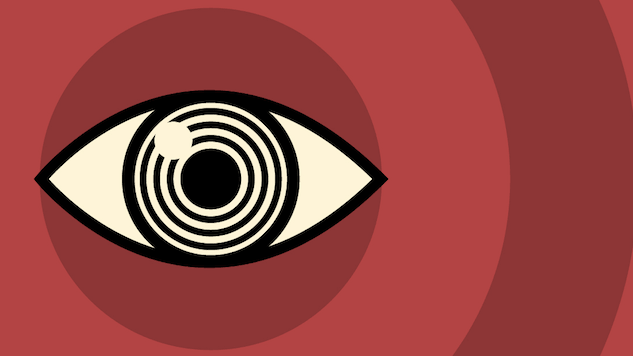
Dystopian novels provide some of literature’s most blatant cultural critiques…and we love them for it. Reading about oppressive government regimes—or even a giant brain telepathically controlling an entire planet—stokes the fire in our souls. And witnessing citizens rebel against the status quo offers hope for the future, even if that rebellion proves unsuccessful.
So if you’re looking for your new, favorite dystopian novel, we’ve got you covered. We’ve gathered Paste editors and writers to compile a list of our favorite books in the genre, ranging from contemporary Young Adult sagas to classics from masters like George Orwell and Margaret Atwood. But before we jump in, here’s how we chose to define a dystopian book:
A work of fiction in which social and/or political forces maintain control of a population by 1) restricting individuals’ personal liberties and 2) exercising force against those who rebel.
With that in mind, books in a more post-apocalyptic or survivalist vein (The Road) have not been included.
The 30 books below are standout entries in the genre, each promising a compelling read for years to come. Here are our picks for the best dystopian books of all time:

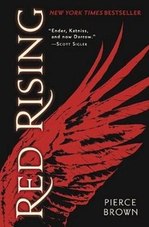 30. Red Rising by Pierce Brown (2014)
30. Red Rising by Pierce Brown (2014)
Red Rising, the first book in Pierce Brown’s sci-fi series of the same name, introduces readers to an interstellar caste system made of nightmares. From the all-powerful Golds who rule over the universe to the lowly Reds who toil beneath the Martian surface, everyone is born into a specific role in society. When Darrow discovers the horrifying truths behind his existence as a Red, he joins a plot to tear down the Golds’ rule. Brown delivers a story that’s as violent as it is captivating, gradually revealing the Golds’ twisted machinations to perpetuate a dystopian society. —Eric Smith

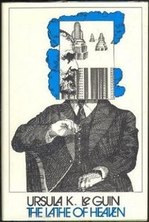 29. The Lathe of Heaven by Ursula K. Le Guin (1971)
29. The Lathe of Heaven by Ursula K. Le Guin (1971)
The Lathe of Heaven begins in one terrible future and tumbles into worse. Ursula K. Le Guin uses a lonely protagonist, George Orr, to peel back the skin of reality and question just how deeply we can determine the course of our lives. Plagued by the notion that his dreams transform space and time, Orr abuses drugs, which has him relegated to necessary drug programs in a regimented society. Orr is inevitably referred to a therapist, who happens to be a famed sleep researcher with a machine that can better manifest Orr’s dream power, allowing Orr to irrevocably alter the already-dystopian forces of history. But the more Orr attempts to control his life, the more his choices devastate everything he was trying to change. His fate is finally realizing that he never had much of a choice at all. —Dom Sinacola

One of the big success stories of the self-publishing industry, Hugh Howey’s original novella was quickly followed by four more books that make up the novel-length story of Wool. The book takes place in a single giant silo, in which thousands of people live and work and take for granted that they can never leave. The tale begins with a sheriff investigating the mystery of his wife’s death and expands until the more existential mysteries are fully revealed. Like all great dystopian works, Howey instills his tale with the same questions that plague us today: How do we balance security and freedom? How do we respond to authority that doesn’t have the interests of its people in mind? What will we risk in pursuit of the truth? And Howey is a master of the slow reveal, with each book peeling back the shrouds from a people who’ve lost their own history. —Josh Jackson

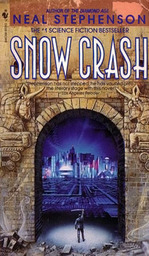 27. Snow Crash by Neal Stephenson (1992)
27. Snow Crash by Neal Stephenson (1992)
In Snow Crash, Neal Stephenson imagines technology pushing us forward as a function of excavating the past, wherein keys to reshaping the future lay buried at the roots of language—think the Tower of Babel. Of course, Stephenson’s future involves an anarcho-capitalist hellscape bound together by greed and a kind of Internet 2.0, the Metaverse, through which anyone who is poor, lacking technological acumen or an immigrant is doomed to flail toward a meaningless death. Stephenson piles his plot with car chases and sword fighting and other high-seas adventure, but at its heart Snow Crash is a broad exploration of class and technology—more specifically, how technology will fail to give power to those who need it most. —Dom Sinacola

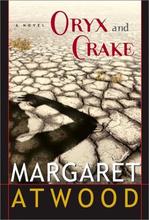 26. Oryx and Crake by Margaret Atwood (2003)
26. Oryx and Crake by Margaret Atwood (2003)
A more traditional dystopian world rolls out in the following two MaddAddam sequels, but Oryx and Crake, Margaret Atwood’s post-millennial meditation on religion and science, had six years to rattle around readers’ imaginations before the next book hit shelves. That’s six years of meditating on the mystery of creation, six years of arguing religious polemics, six years of jumping uneasily at the news of each scientific development in the field of genetic modification or cloning or bioengineering. More an examination of our actual dystopian social order than a piece of speculative fiction, Oryx and Crake highlights Atwood’s skepticism of society’s ability to make compassionate collective decisions. The novel delivers a solid meditation on science’s baked-in God Complex, exploring the hubristic weirdness—and utter desolation—upon which creation myths are built. —Alexis Gunderson

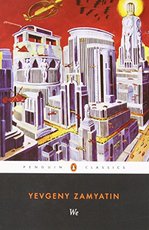 25. We by Yevgeny Zamyatin (completed in 1921)
25. We by Yevgeny Zamyatin (completed in 1921)
We was originally written in Russian, but its dystopian vision of human nature under the rule of cold logic proves as resonant to an English-reading audience in 2018 as it was to readers in the Soviet Union nearly 100 years ago. We follows D-503, a rule-abiding man whose life is changed when he meets a spirited woman—a woman who has not yet been assigned to a Society-mandated procreative pairing. She introduces a freer way of living that includes passion and an anarchic underground group aiming to antagonize the Society, but D-503 wonders if love is a human weakness too unpredictable to be left untamed. As an artifact of hope that societies teetering on the edge of dystopia might find a way to pull themselves back to safety, We (and its cynical ending) is a definite failure. But as a thread connecting humanity across generations scrambling for answers in the face of hopelessness, it’s a great success. —Alexis Gunderson

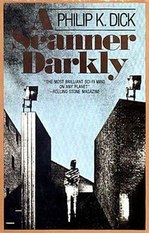 24. A Scanner Darkly by Philip K. Dick (1977)
24. A Scanner Darkly by Philip K. Dick (1977)
Written as a hyper-fictional account of the decline Philip K. Dick witnessed of the ‘60s and ‘70s drug culture in L.A., A Scanner Darkly presents a glimpse of the mid-’90s were the War on Drugs left to adapt to its own increasing illogic. Wearing tech suits that “scramble” their identities when not pretending to be low-level drug dealers or addicts, undercover officers lose grip of who they are and what they’re supposed to be doing, consumed by the life and addiction they were apparently fighting at the mercy of Substance D. As is usually the case in Dick’s novels, Substance D abuse makes it harder and harder for our protagonist, undercover officer Bob Arctor, to discern which of his dual lives is actually the right one. Though the novel functioned for Dick as a eulogy to the many friends and loved ones he lost to drugs, A Scanner Darkly ends on a note of oppression far beyond the scope of Arctor’s crisis of self. If war is big business, then no one knows that better than those who continue to wage it on drugs. —Dom Sinacola

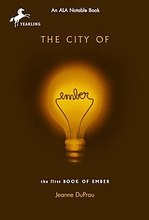 23. The City of Ember by Jeanne DuPrau (2003)
23. The City of Ember by Jeanne DuPrau (2003)
Not all dystopias include riddles and ancient handwritten instructions for escape that amount to a treasure map, but not all dystopias are The City of Ember. A middle grade classic about a community that has lived many generations in the literal dark, Jeanne Du Prau’s novel opens as the group’s cache of tinned food and lightbulbs is dwindling. The City of Ember is a fun read on its own merits, but it stands out as a dystopian exemplar by taking the trappings of the genre—a society that purports to be some kind of ideal and goes to extreme lengths to maintain its control over the population—and framing them in a way that, while plenty harrowing, doesn’t exclude kids from participating in the existential discussions dystopian stories inspire. Fair warning: It does include a pretty game-changing cliffhanger, so make sure you have the three sequels ready to pick up the moment The City of Ember ends. —Alexis Gunderson

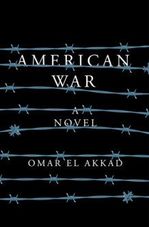 22. American War by Omar El Akkad (2017)
22. American War by Omar El Akkad (2017)
Omar El Akkad’s novel imagines a future mere decades from now, one in which the U.S. is divided by a second Civil War. Opening with protagonist Sarat Chestnut’s tumultuous childhood as the fighting intensifies, American War explores how divisive ideology—and homegrown extremism—festers into a destructive cancer on society. And what’s most frightening about El Akkad’s novel is that it describes a future that could be our own. If hatred continues to gain political clout and weapons continue to be used by citizens against citizens, Sarat’s reality could be more than a haunting tale. The genius of El Akkad’s prose is that it can be read both as a thrilling dystopian novel and as a sobering examination of American society. -Frannie Jackson

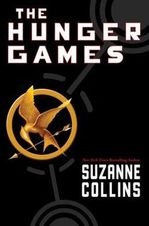 21. The Hunger Games by Suzanne Collins (2008)
21. The Hunger Games by Suzanne Collins (2008)
The dystopian novel that launched a bestselling trilogy and an epic film franchise, The Hunger Games is an action-packed ride set in a brutal, totalitarian future. Suzanne Collins’ novel brings readers to Panem, a new nation founded amongst the ruins of North America and boasting a wealthy Capitol governed by the one percent. In a sadistic form of population control, the Capitol live-broadcasts a reality competition in which teens fight to the death for the entertainment of the elite and the horror of the citizens every year. And when a 16-year-old named Katniss watches her sister get selected for the event, she volunteers to take her place. The result has earth shattering consequences, with Katniss’ bravery leading the country towards rebellion. —Eric Smith

 20. An Ember in the Ashes by Sabaa Tahir (2015)
20. An Ember in the Ashes by Sabaa Tahir (2015)
Young Adult fantasy and science fiction novels have been killing it on the complex dystopian front for years. Sabaa Tahir’s An Ember in the Ashes, which follows three characters in a brutal dystopian society resembling ancient Rome, is one of the recent standouts. The emotional complexity in Laia, Elias and Helene’s starkly different worlds is stunning, and while their tribulations continue throughout Tahir’s series, the trials they face in the first volume are morally compelling and deeply engaging as a standalone read—even if the ending will leave you anxious for more. —Alexis Gunderson

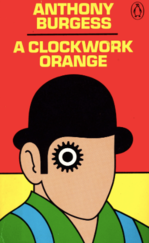 19. A Clockwork Orange by Anthony Burgess (1962)
19. A Clockwork Orange by Anthony Burgess (1962)
A Clockwork Orange’s lead character (“protagonist” might be a stretch) is Alex, a delinquent youth with a fetish for violence and classical music, who leads a gang of “droogs” on a streak of terror throughout England. Harassment and assault are all fair game, as the boys chug drug-laced milk and set to work. When the droogs scale up their attacks, Alex ends up with a lengthy prison sentence, where he finds solace in reading the Bible—not for its moral messages, but for its violent scenes—and undergoes a controversial form of aversion therapy. There are actually two versions of A Clockwork Orange; in the original British edition, Alex is “cured” of his penchant for violence and makes an eventual good-faith attempt to reform his ways. The novel’s American editor found that ending implausible and insisted on the book concluding with the prior, darker chapter (from which Stanley Kubrick took his film conclusion in the iconic adaptation). That America wouldn’t accept a character giving up his violent ways says all that needs to be said about A Clockwork Orange’s enduring popularity and relevance. —Steve Foxe

 18. The Man in the High Castle by Philip K. Dick (1962)
18. The Man in the High Castle by Philip K. Dick (1962)
What makes The Man in the High Castle so unsettling is that it could have happened. Philip K. Dick’s alternate history novel imagines a world in which Nazi Germany and Japan were World War II’s victors, leading the United States to be divided and ruled by the two empires. The novel opens 15 years later, chronicling American life under totalitarian rule. Dick includes fantastical elements, of course, including a novel within the novel that describes an alternate universe in which the Allies won the war. The genius of High Castle is that the golden alternate universe, so similar to our own, is no utopia. The Allied powers conquer, racism still reigns and life is better for some and worse for others. The result is a sobering reminder that everything comes with a cost, even in a more alluring timeline. —Frannie Jackson

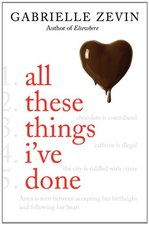 17. All These Things I’ve Done by Gabrielle Zevin (2011)
17. All These Things I’ve Done by Gabrielle Zevin (2011)
Gabrielle Zevin is masterful at taking mundane thought experiments—What if a teen who had it all got amnesia? What if death meant living your years backwards until you returned to the world as a baby?—and turning them into something special. But her “What if our near-future world criminalized chocolate and coffee?” Young Adult trilogy, beginning with All These Things I’ve Done, is a dystopian standout. It demonstrates how devastating even the most mundane changes to a culture can be. And in telling the story from the perspective of a retired woman regaling readers with her teen exploits, it demonstrates how all things ebb and flow, even misguided totalitarian policies. You just have to push back when the tide comes in. —Alexis Gunderson

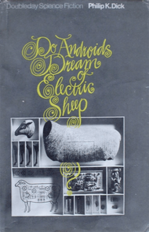 16. Do Androids Dream of Electric Sheep? by Philip K. Dick (1968)
16. Do Androids Dream of Electric Sheep? by Philip K. Dick (1968)
The plot behind Philip K. Dick’s Do Androids Dream of Electric Sheep? is the stuff of public consciousness, with Ridley Scott’s neo-noir adaptation shorn of Dick’s thornier existential conundrums. Though Blade Runner questions the organic foundation of what makes us human, Dick’s book digs deeper, imagining at the core of a dystopian future not a blurred line between what’s “real” and what’s synthetic, but a functional disintegration of the tenets of empathy—a breaking down of the one human ability that allows society to persevere. In Dick’s novel, androids are discovered through a test that explicitly measures empathy, while humans attempt to purchase expensive, ultra-rare organic animals in order to boost their empathic responses or rally around a cult-like figure who preaches a belief system concerned with practicing empathy. Do Androids Dream of Electric Sheep?, then, is about embracing such empathy in a post-apocalyptic world, about imagining the lush inner worlds of fake people in order to preserve the humanity of the real ones. —Dom Sinacola

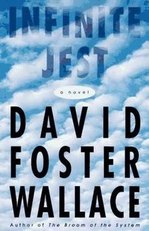 15. Infinite Jest by David Foster Wallace (1996)
15. Infinite Jest by David Foster Wallace (1996)
The future that Infinite Jest describes may still be ours, or it may be a year that’s already passed, as 12-month spans of time no longer chronicled numerically but are sponsored by corporations. North America has consolidated under one privatized government, comprised of a web of companies with their own acronym: ONAN (because author David Foster Wallace goes out of his way to make a jerk off joke). Meanwhile, a herd of monster hamsters roams the massive irradiated chunk of what used to be the northeastern U.S. and southeastern Canada, plus Quebecois separatists plot ways to commit substantial acts of terrorism, which happens to involves a mythological Entertainment—directed by a tennis academy founder—that kills anyone who watches it. Wallace doesn’t so much explicate as occasionally point to all of this, unable to shake one incomprehensibly long tangent after another. His sprawling, mostly suburban-Boston-set cast of characters never quite reference the apocalyptic chaos that’s long unfolded around them—the aforementioned tennis academy and a nearby halfway house witness to Hamlet-like melodrama and epic tragedy. They’re just trying to survive the absolute soul-crushing absurdity of what their futures have become. —Dom Sinacola

 14. The Windup Girl by Paolo Bacigalupi (2009)
14. The Windup Girl by Paolo Bacigalupi (2009)
Paolo Bacigalupi’s breakthrough biopunk novel collected Locus, Hugo and Nebula Awards upon its release, and its global-warming-induced catastrophes only seem more pressing in the decade since. In The Windup Girl’s ravaged 23rd century, only Thailand maintains a genetically viable crop of seeds, with the rest of the world fighting over genehacked produce controlled by a handful of ill-intentioned massive corporations. The “windup” part of the title refers to the coiled-spring system of energy storage popular in this world without combustion engines—and specifically the robotic Emiko, a Japanese “windup girl” who inadvertently becomes a key player in Thailand’s political turmoil. Bacigalupi excels not just in constructing his elaborate, starving world full of “kink-springs,” but in humanizing everyone from the hardened company-man protagonist to the titular automaton. —Steve Foxe

 13. Cloud Atlas by David Mitchell (2004)
13. Cloud Atlas by David Mitchell (2004)
David Mitchell’s Cloud Atlas is a formal masterpiece, a book whose structure is an essential part of its story. A sort of mirror-plated Chinese box, the story’s structure is inspired by Italo Calvino’s if on a winter’s night a traveler, containing several interrupted narratives in a nested sequence, with each connected to the next by a single character from the previous tale. A 19th century American lawyer meets Maori people and missionaries in England; a young British composer in the 1930s talks a dying luminary into making him his amanuensis; the young composer’s lover ends up a nuclear scientist in the Reagan ‘70s in California; a journalist with a bullseye on her back; a vanity publisher; a slave from a dystopic future Korea. The center of the novel is the most identifiably “dystopian” narrative, set in a post-apocalyptic Hawaii at an unspecified point in the future. The compelling thread in this book is the structural implication that the dystopic future has already been set in motion by the events of the present—and the past. Multi-POV narratives can be challenging to sustain, even when all the characters are in the same story; accomplishing that with six separate, barely-connected narratives is almost a magic trick. Mitchell’s novel is a structural tour de force and possibly one of the most intriguing books of the 21st century (so far). -Amy Glynn

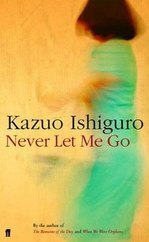 12. Never Let Me Go by Kazuo Ishiguro (2005)
12. Never Let Me Go by Kazuo Ishiguro (2005)
Nobel Prize-winner Kazuo Ishiguro plays a litany of tricks on his readers with Never Let Me Go, most notably sneaking a dystopian science-fiction premise into this literary meditation on mortality. Protagonist Kathy is a “carer,” and we gradually learn that carers help ease the final days of donors: clones raised to be harvested for their organs. Much of Never Let Me Go follows Kathy’s recollections of Hailsham, the boarding school where she grew up alongside fellow students Tommy and Ruth, and each revelation about Hailsham and the young clones’ place in the world is more heartbreaking than the last. Although the word “clone” brings to mind much flashier “hard” sci-fi, Ishiguro wastes no ink on trying to explain the genetics of it all. Never Let Me Go is a melancholy coming-of-age story with a cast fated since birth to never see an advanced age, and its dystopia is one all-too-familiar: a world in which certain classes live well, and others are effectively doomed. —Steve Foxe

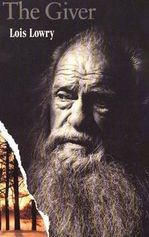 11. The Giver by Lois Lowry (1993)
11. The Giver by Lois Lowry (1993)
Chances are, you first read The Giver in school. Lois Lowry’s Newbery Award-winning novel frequently makes its way into classrooms, and with good reason. Set in what appears to be a utopia, the novel introduces a young boy named Jonas who lives in a pain-free society. The world runs on conformity and contentment—at the price of emotion. So when Jonas is selected to be the next Receiver of Memory and is introduced to past secrets, he finds himself questioning the world around him. The Giver asks big questions about what people are willing to sacrifice in order to feel safe: Would you give up all feeling for a life without crime or sickness? And what is the value of your individuality? —Eric Smith

 10. Neuromancer by William Gibson (1984)
10. Neuromancer by William Gibson (1984)
Neuromancer didn’t invent cyberpunk—writer Bruce Bethke coined the term in 1982, and its central themes had previously appeared, piecemeal, in William Gibson’s own short fiction—but it remains the movement’s definitive, eerily prescient exemplar. As glossed by Webster’s New World Dictionary of Computer Terms, the setting of cyberpunk is one of “artificial intelligences, monopoly capitalism and a world culture as ethnically eclectic as it is politically apathetic and alienated.” Gibson’s slangy prose and hard-boiled protagonist, a washed-up hacker named Case, paint this exhaustion with prophetic conviction. Through a series of intricate crimes, Case and his sidekicks—a cyborg and a thief—reach the novel’s endgame, which involves two AIs (named Wintermute and Neuromancer) in pursuit of inconceivable power. In this, George Orwell’s Nineteen Eighty-Four has nothing on Gibson’s: Then and now, Neuromancer’s many truths are far more chilling than its fictions. —Matt Brennan

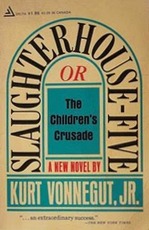 9. Slaughterhouse-Five by Kurt Vonnegut (1969)
9. Slaughterhouse-Five by Kurt Vonnegut (1969)
Despite protagonist Billy Pilgrim’s abduction by aliens and subsequent time travel, Slaughterhouse-Five boasts one of the more mundane dystopian worlds on this list. And that’s where Kurt Vonnegut’s novel proves terrifying. In writing about both the trivial and the horrifying realities of war—and chronicling the trivial and the horrifying ramifications for decades after “peace” is declared—Vonnegut reveals that it impacts every facet of daily life. Pilgrim may be unstuck in time, but the governments in Slaughterhouse-Five are the ones caught in a cycle of reliving the past yet learning nothing from their mistakes. The fact that the governments perpetuating Pilgrim’s dystopian nightmare so closely mirror our own should frighten us. —Frannie Jackson

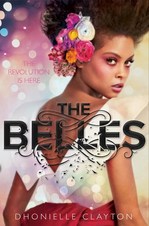 8. The Belles by Dhonielle Clayton (2018)
8. The Belles by Dhonielle Clayton (2018)
It’s bold to include the first book of a yet-unfinished series on a “best ever” list. But Dhonielle Clayton’s novel in which beauty has literally been weaponized—as both a signifier of wealth and as an instrument of power—is so precise a reflection of the capitalist patriarchy’s toxicity that it would be dishonest to exclude it for being new. Set in a world ravaged of natural beauty—all humans are cursed to live with wrinkled gray skin, scraggly hair and red eyes unless they can pay a talent-wielding Belle to have their situation changed—The Belles unveils a dystopia that is more enticing, more feminine and more brutally brittle than any that have come before. Its young protagonist, Belle Camellia Beauregard, is the perfect tour guide through this brutality, balanced between being a wide-eyed Pollyanna amazed by life beyond the walls of her sheltered upbringing and a keen-eyed judge of the moral hypocrisy her sugary world holds. The time spent observing the broken world of Orleans through her empathetic eyes, building the foundation for the society-shattering fireworks threatened by the sequel, is well worth every second. —Alexis Gunderson

 7. A Wrinkle in Time by Madeleine L’Engle (1962)
7. A Wrinkle in Time by Madeleine L’Engle (1962)
Madeleine L’Engle’s classic Young Adult novel won The Newberry Award among many others, and it’s hard to believe that such an enduring classic was rejected somewhere between 25 to 40 times (accounts vary). Apparently, no one wanted a science fiction book with a female protagonist and/or the book was too controversial, because it introduced children to the notion of “evil.” L’Engle was, at any rate, a refreshing example of someone who could speak quantum physics and religious mythography simultaneously and accessibly (a gift still possessed by few). The clear and obvious dystopic landscape of A Wrinkle in Time is the planet Camazotz, to which protagonist Meg Murray space-time travels to rescue her father, and later her genius brother, from “It,” a giant pulsating brain that controls the minds of all within its reach. This overtly dystopic world finds a mirror image in plain old human adolescence, and long before Meg arrives on an evil alien Stepford-planet, she’s contending with the inner dystopia of adolescence, the overwhelming need for both conformity and individuation. —Amy Glynn

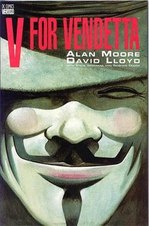 6. V for Vendetta by Alan Moore and David Lloyd (1988-1989)
6. V for Vendetta by Alan Moore and David Lloyd (1988-1989)
Of all the indignities that Alan Moore has suffered across his long career, the proliferation of the Guy Fawkes mask among anonymous sects of Internet users is certainly high on the list. Worse, though, is how increasingly feasible the plot of V for Vendetta, his landmark comic series created with artist David Lloyd, has become in recent years. Following a nuclear conflict in the late ‘80s, a fascist political party has seized control of England, throwing anyone contrary to their agenda into concentration camps—if not executing them on the spot. This is the fate 16-year-old Evey has in store for her when she is caught soliciting her body, until a masked figure saves her from her would-be killers and summarily detonates a mass of explosives below the Parliament Building—the first in a series of radical acts aimed at inspiring an anarchist streak in England’s embattled populace. Over the course of the series, readers learn that V, the masked vigilante, was driven to action by his experience in one of the concentration camps. But as he later states in one of the story’s most-quoted passages, he can’t be killed, because he is only an idea, and “ideas are bulletproof.” Moore and Lloyd’s dystopian England may feel shockingly possible in the era of the Far Right, but there is a glimmer of hope to be found in the notion that any single one of us can become part of the resistance. —Steve Foxe

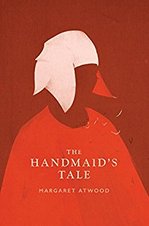 5. The Handmaid’s Tale by Margaret Atwood (1985)
5. The Handmaid’s Tale by Margaret Atwood (1985)
Even before its adaptation into an Emmy-winning TV series, The Handmaid’s Tale needed no introduction: Gilead, the theocratic regime that overthrows the U.S. government after environmental degradation renders much of the population infertile, is the ideal vessel for Margaret Atwood’s interest in both historical (Alias Grace) and speculative (Oryx and Crake) fiction. As told by Offred, who is forced to live with the Commander and his wife and to participate in “the Ceremony”—a ritualized rape—at the height of her menstrual cycle, The Handmaid’s Tale is as much a reminder of what societies already do to women as it is a warning about what they might do. As Atwood has said repeatedly over the years, every mistreatment, restriction or torture has a real-world precedent. The novel’s dystopia is our own. —Matt Brennan

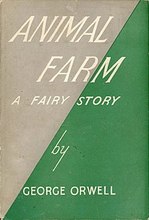 4. Animal Farm by George Orwell (1945)
4. Animal Farm by George Orwell (1945)
Not all classics are worth their continued inclusion in the canon, but George Orwell’s Animal Farm, one of the 20 century’s seminal dystopian narratives, continues to offer lasting significance. Bitingly cynical, the farm-based socio-political allegory is so unambiguous in its satirical vision of the closed loop that is the spectrum between idealism and totalitarianism that it’s easy to dismiss as overly facile. And yet, we continue, as collective social groups the world over, to ignore Orwell’s lessons. There is a reason this book is a mainstay in high school English curriculum; we just need to find a way to make that first reading stick. —Alexis Gunderson

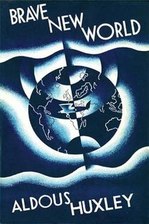 3. Brave New World by Aldous Huxley (1932)
3. Brave New World by Aldous Huxley (1932)
Predating George Orwell’s Nineteen Eighty-Four and, in some ways, proving even more prescient, Aldous Huxley’s vicious undoing of utopia proves that the most brutal deaths can come from the softest touch. Depicting a science-driven society that has been stripped of the emotional resonance of birth and death in the name of comfort and happiness, Brave New World reveals a world that has been anesthetized rather than brutalized. The result is that its bottle-grown casts and calming supply of soma are impossible to ignore in the age of distraction and income inequality. Modern technocracy’s font is now Silicon Valley, not Detroit, but the direction of the compass matters less than the speed of its spin, north, north-west, west, south-west, south … —B. David Zarley

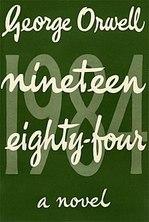 2. Nineteen Eighty-Four by George Orwell (1949)
2. Nineteen Eighty-Four by George Orwell (1949)
When we say something is Orwellian, what we are truly saying is that say it exhibits the authoritarian specter of Nineteen Eighty-Four’s Big Brother. George Orwell’s Big Brother, the ruling party of all dystopian novels, maintains a society so oppressive its hopeful appendix is never remembered. And it’s made all the more so for the sheer terror that comes with seeing its ideas, in various iterations, all around us. The NSA, the War on Terror, the rise of Fake News as a capital-letter concept; the world is seemingly more Orwellian by the day, more horrifying than any alien invasion, nuclear wasteland or supernatural-disaster. We are reminded of Nineteen Eighty-Four every time the clock strikes thirteen for us. —B. David Zarley

 1. Fahrenheit 451 by Ray Bradbury (1953)
1. Fahrenheit 451 by Ray Bradbury (1953)
A book about the burning of books. Powerful words about the power of the written word. In 1953, Ray Bradbury gave the world a chilling view of a possible future based all too deeply in the truths of the past and present—the bonfires of the vanities throughout history leading up to the Nazi book burnings just a decade earlier and the Senate Subcommittee of Juvenile Delinquency that was about to launch an attack on comic books. Stories help us see the world differently, and that’s what they do for Bradbury’s unlikely protagonist Guy Montag, whose job it is, as a fireman, to burn books. Stories and characters—people—like Clarisse McClellan can change you simply through the questions they ask or make you ask yourself.
Dystopian fiction can serve as a warning: Be careful or this is where we may be headed. And Fahrenheit 451 is certainly a warning. But it’s also a reminder of the power of words, that we need to be bothered by them once in a while, and that the most powerful word is “why?” And if Bradbury’s vision for the future was a dark one in which violence and empty entertainment drowned out everything that made us human, there’s an optimism through it all. Even in the face of totalitarianism, humanity will find a way to rise from the ashes and just maybe get things right. —Josh Jackson
